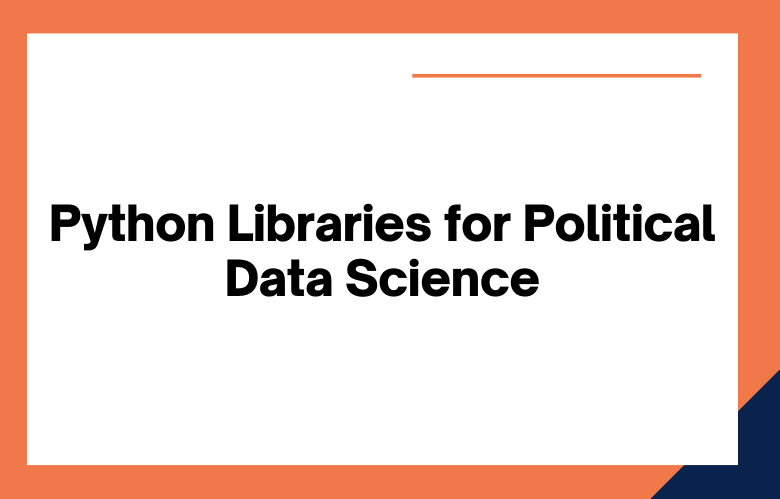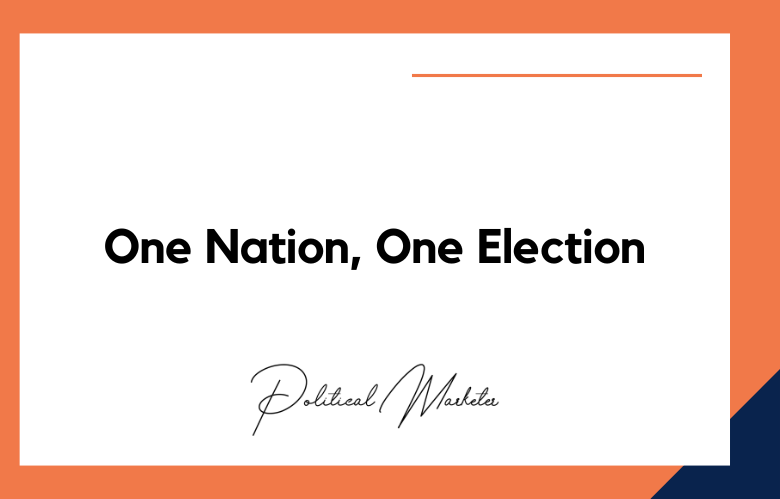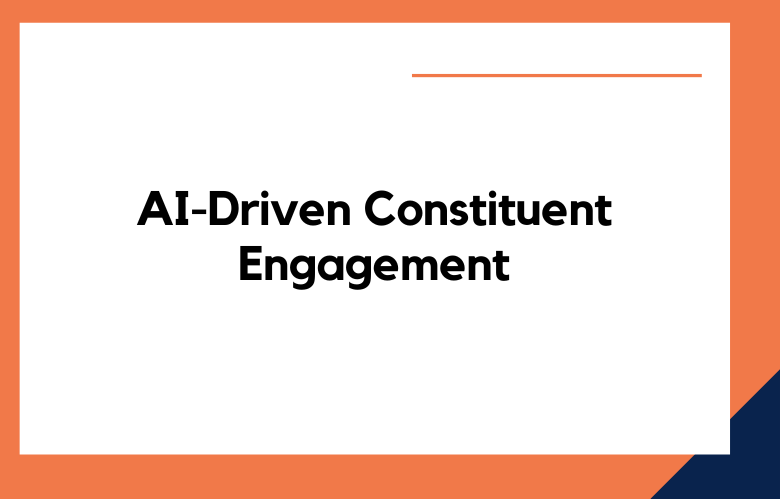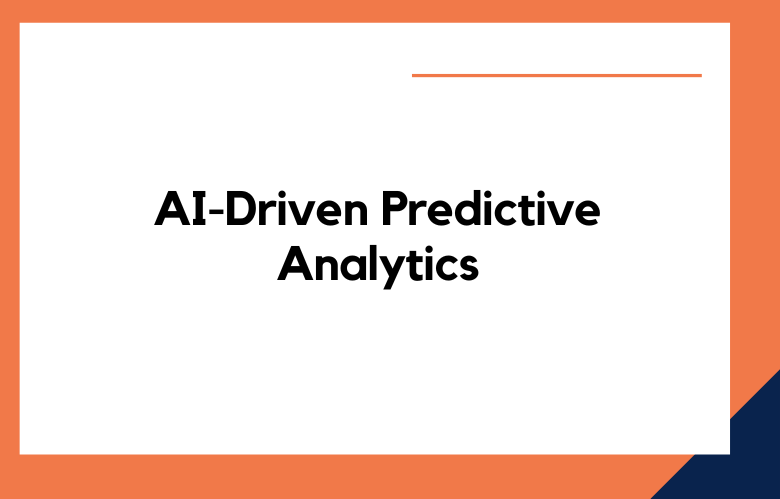Python is a powerful programming language widely used in many industries today. It’s no surprise that political data scientists use Python to analyze and study data related to the political world. We will explore 5 of the best Python libraries for political data science. Each library offers unique capabilities and features, so choose the one that meets your needs. Happy coding!
Python is a programming language for data science. It has a lot of libraries that make it easy to do complex tasks. I will describe five of the best Python libraries for political data science. These libraries are NumPy, pandas, sci-kit-learn, stats models, and seaborn. I will explain what each library does and how it uses for political data analysis.
You should be able to choose the proper Python library for your needs and get started with political data science!
5 Best Python Libraries For Political Data Science
Python is a universal language for various tasks, including political data science. Here are five of the best Python libraries for this purpose:
1. Pandas for Political Data Science
A robust data analysis and manipulation library make working with complex datasets easy. Pandas are one of the most popular animals in the world. But did you know that they use political data science?
That’s right; pandas are becoming increasingly popular among political analysts and data scientists. Why? Because they can effectively analyze vast amounts of data. So, if you’re planning to enter political data science, consider starting with a panda!
A panda walks into a bar and sees a group of people wearing suits and talking animatedly. The panda thinks to himself, “These must be political scientists.”
He approaches the group and overhears them discussing the latest poll data. “Interesting,” he thinks, “I’ll have to remember this for my next article on pandas for political data science.”
Studying political data science is essential for understanding the inner workings of government and politics. Pandas are a vital part of this process, as they help to organize and make sense of complex data sets. Political data science would be a far less effective tool for understanding the world around us without pandas.
Pandas are an excellent tool for political data science. They help us to understand and analyze complex data sets quickly and easily. With pandas, we can identify patterns and trends otherwise hidden in the data. In short, pandas are essential for anyone interested in politics and data science.
Political data scientists love pandas! Their cute fuzzy faces and gentle demeanors are calming when working with complex data sets. Plus, the black-and-white color scheme is perfect for visualization purposes.
In today’s world, data is everything. And when it comes to politics, data is essential. That’s why more and more political scientists are turning to pandas for help.
Pandas are a powerful tool for analyzing large amounts of data. And they’re becoming increasingly popular in the political science community.
If you’re interested in using pandas for political data analysis, there are a few things you need to know. First, you need to understand Python. Secondly, you need to be comfortable working with large datasets.
But if you’re up for the challenge, pandas can be a great way to gain insights into politics.
The pandas are coming for your political data! They know about the government‘s inner workings and are eager to help you with your next big project.
2. NumPy for Political Data Science
A virtual library for scientific computing offering powerful array and matrix operations.
Data science is a burgeoning field increasingly at the heart of political decision-making. NumPy is one of the most popular Python libraries for data science and uses in the political arena.
As data becomes increasingly important in politics, those who can understand and manipulate it will have a significant advantage. NumPy allows users to perform complex mathematical operations on large datasets, making it a powerful tool for political data science.
The study of politics is diversifying, and NumPy plays a role.
NumPy is a powerful tool for political data science.
It enables analysts to work with vast amounts of data efficiently and to find patterns that would otherwise be undetectable.
In short, NumPy is revolutionizing the way we study politics.
NumPy for Political Data Science is a powerful tool for analyzing and understanding political data. With NumPy, you can quickly and easily manipulate and visualize data to gain insights into the dynamics of the political process. NumPy is essential for any political scientist who wants to make the most of their data.
NumPy is a potent tool for political data science. It allows you to quickly and easily manipulate large amounts of data, making it a valuable tool for analyzing complex problems.
If you’re interested in using NumPy for political data science, there are a few things you should know:
- NumPy is a powerful Python library that makes working with data easy and efficient.
- Political data science is about using data to understand and predict political behavior.
- NumPy is the perfect tool for doing just that.
With its ability to handle large data arrays quickly and easily, NumPy is an essential tool for any political data scientist. So if you plan to get into the field, check out NumPy.
NumPy is a powerful tool for political data science. It provides sophisticated data structures and algorithms to help you analyze and manipulate complex data sets. With NumPy, you can quickly examine and compare voting patterns, explore demographic trends, and much more. Whether interested in studying electoral politics or understanding public opinion dynamics, NumPy helps get the data.
3. SciPy for Political Data Science
A comprehensive library of algorithms and tools for scientific computation.
SciPy is excellent for political data science. It has all the tools that process and visualize data. Plus, it’s free and open source. Whether you’re a seasoned political data scientist or just getting started, SciPy is the perfect tool.
SciPy is essential for anyone interested in political data science.
SciPy provides the tools and features to analyze and understand complex political datasets.
Without SciPy, analyzing and understanding complex political datasets would be impossible.
SciPy is a powerful tool for political data science. It allows researchers to analyze vast amounts of data quickly and easily, making it a valuable resource for understanding complex social phenomena.
In the world of political data science, SciPy is a powerful tool. It can help you analyze data sets and make predictions about outcomes. Whether you’re interested in voting patterns or election results, SciPy can give you insights that other tools simply can’t. So if you want to be on the cutting edge of political data science, check out SciPy.
The study of political science involves understanding various aspects of government and politics. One important topic is the analysis of data related to political issues. It is where SciPy can be helpful.
SciPy is a software library for Python that includes modules for scientific computing. It is a valuable resource for political scientists who need to analyze data.
SciPy has many features that make it well-suited for this task, including statistical functions, optimization tools, and more. With SciPy, political scientists can easily find trends and relationships in their data.
Political science study is incomplete without understanding the data that drives it. Luckily, there’s SciPy.
SciPy is a Python-based open-source mathematics, science, and engineering software ecosystem.
But political data scientists know that SciPy can do more than crunch numbers.
It can help map voting patterns, analyze campaign finance data, and predict election results.
In short, if you want to make sense of politics, you need SciPy.
SciPy for political data science is a powerful tool for analyzing and understanding complex datasets. It can help you uncover hidden patterns and insights and make better decisions about allocating resources and targeting voters.
The SciPy stack has everything you need for political data science. From data analysis and visualization to machine learning and statistics, SciPy has you covered. And with its wide range of applications, SciPy is perfect for anyone interested in political data science.
4. matplotlib for Political Data Science
A 2D plotting library produces publication-quality figures.
To understand the impact of matplotlib on Political Data Science, we must first understand what matplotlib is.
matplotlib is a Python library that enables developers to create high-quality 2D visualizations. While it primarily uses data visualization, it uses it for various purposes, such as working with images, annotations, and politics.
Lastly, matplotlib is also helpful for creating publication-ready figures. Therefore, if you are planning to enter the field of political data science, matplotlib should be one of the tools in your toolbox.
In political science, data visualization is essential for understanding complex phenomena. matplotlib is a powerful tool that allows us to create informative and visually appealing graphs and charts. With its wide range of customization options, matplotlib is ideal for conveying the results of our analysis clearly and effectively.
matplotlib is a powerful tool for political data analysis. However, it can be challenging to use if you’re unfamiliar with its capabilities. In this article, we’ll explore how matplotlib visualizes political data. By the end, you’ll be able to utilize this powerful tool to understand the complex world of politics better.
One of the best tools for Political Data Science is matplotlib.
This widely used Python library is compelling and versatile, perfect for analyzing and visualizing data from various sources.
matplotlib is perfect for exploring trends in voting patterns, identifying correlations between disparate data sets, and much more.
So if you want to get started in Political Data Science, check out matplotlib!
Python’s matplotlib library is essential for data analysis in political science.
From altering the colors in electoral maps to understanding voting trends over time, matplotlib has become a staple tool for understanding complex data sets.
To get into political data science, you must be proficient in matplotlib. This powerful Python library is essential for creating sophisticated visualizations of data. Without a strong foundation in matplotlib, you’ll be severely disadvantaged when understanding and analyzing complex political datasets.
5. TensorFlow for Political Data Science
TensorFlow is the perfect tool for politically-minded data scientists. With its powerful data processing capabilities, TensorFlow can help you analyze and predict election outcomes, track voting patterns, and more. So if you’re planning to get involved in politics or want to learn more about what data science can do for the world of politics, be sure to check out TensorFlow for Political Data Science.
- TensorFlow lets you analyze political data like never before.
- With TensorFlow, you can find hidden relationships in voter data, campaign finance records, and more.
- TensorFlow makes finding patterns and anomalies that could make or break a campaign easy.
- Get ahead of the competition with TensorFlow for Political Data Science.
TensorFlow is perfect for Political Data Science. It gives you the ability to analyze data like never before. With TensorFlow, you can truly understand the political landscape.
Political data science is a burgeoning field, and TensorFlow is emerging as a powerful tool for practitioners in this field. In this blog post, we’ll explore how TensorFlow can be used for political data science and look at some examples of how it operates to extract insights from data.
- TensorFlow can help you analyze and predict political outcomes.
- It studies public policy’s effects or sees how election results might change under different circumstances.
- TensorFlow can also evaluate campaign strategies or understand why specific political movements succeed while others fail.
It can help you answer complex questions about voting patterns and public opinion.
With TensorFlow, you can build models to predict election outcomes and understand their influencing factors.
Conclusion
If you are planning for a list of Python libraries for data science, or if you need help implementing any of the ones we’ve mentioned here, don’t hesitate to contact us. Our political data scientists are experts in analyzing and working with data from worldwide.
We’re happy to put our skills to work for you and help your campaign succeed.
One way to get in touch is by filling out our online form on this site or give us a call at
+91 9848321284. Let’s work together today!











